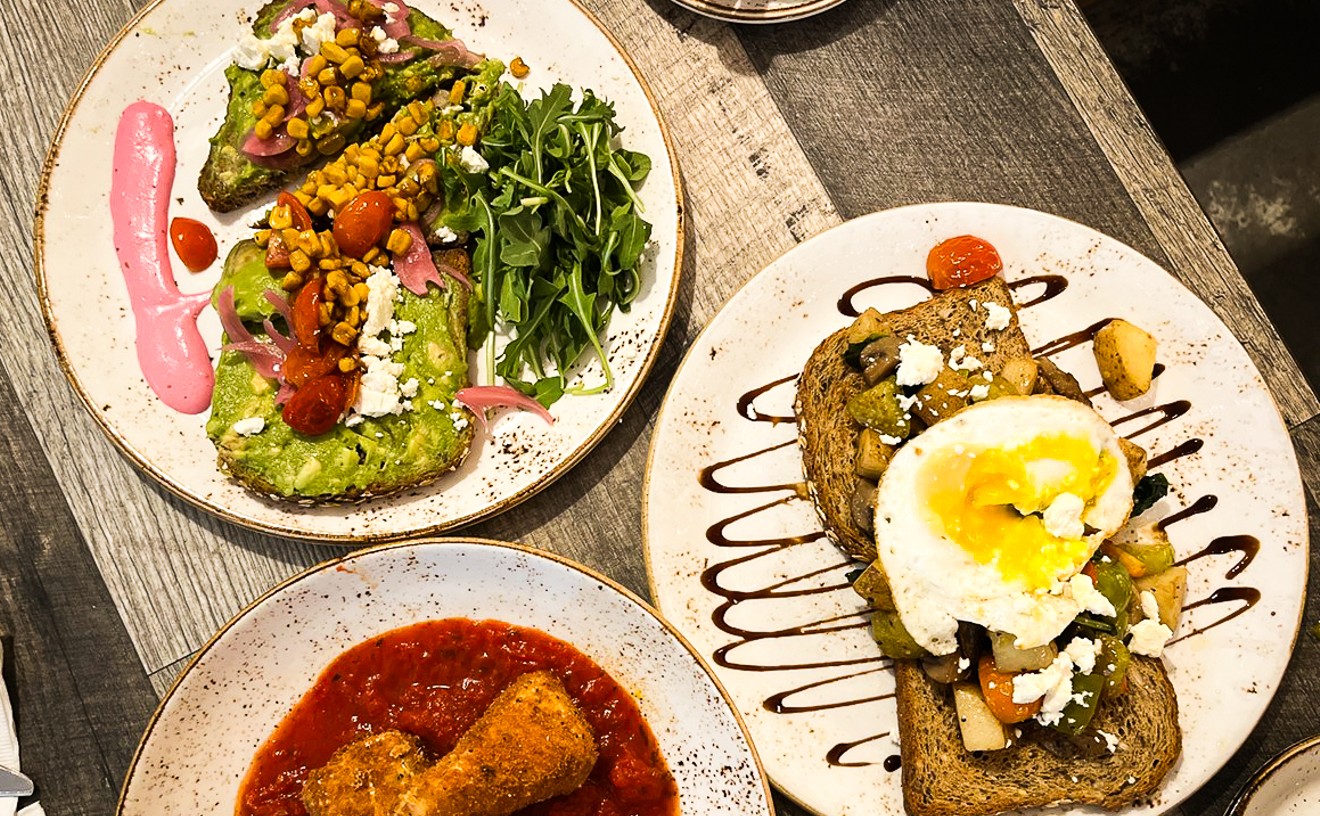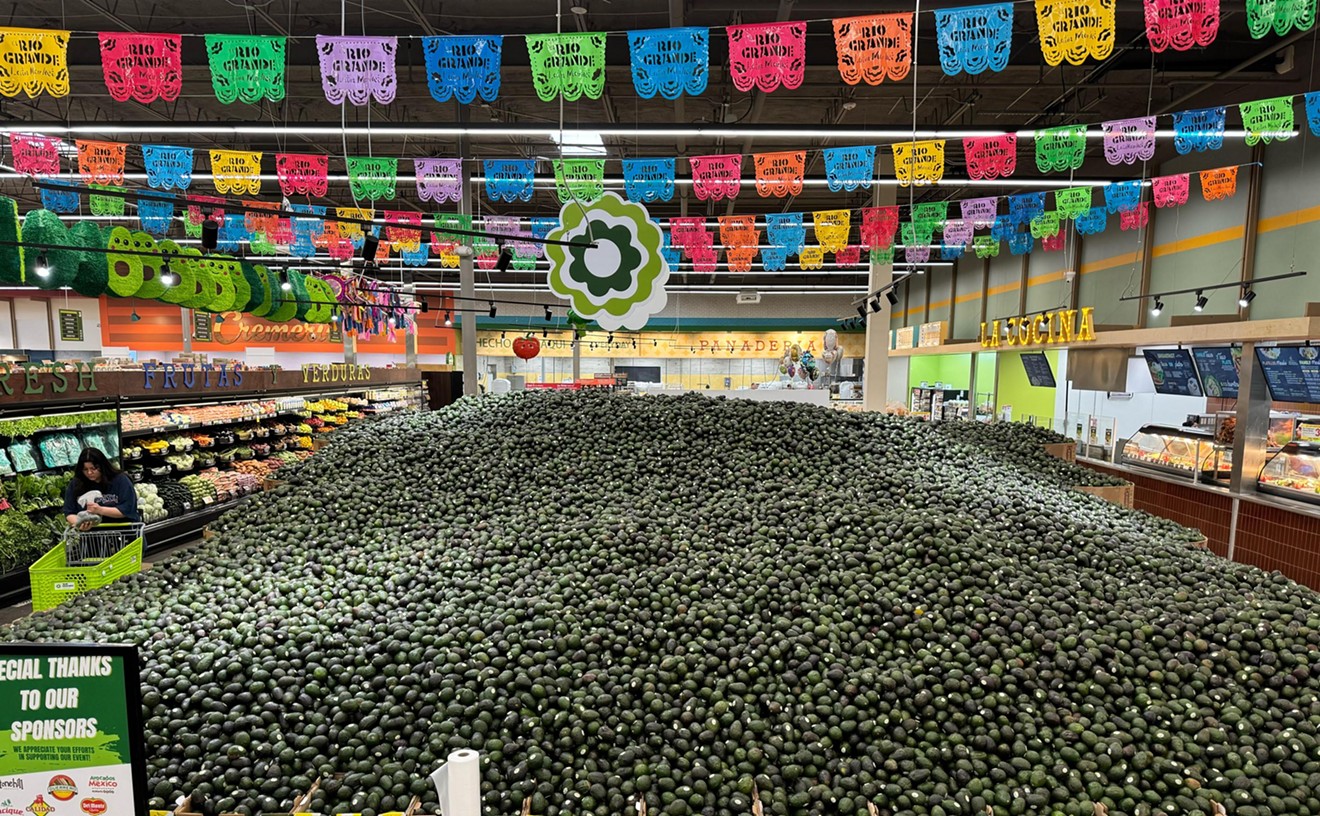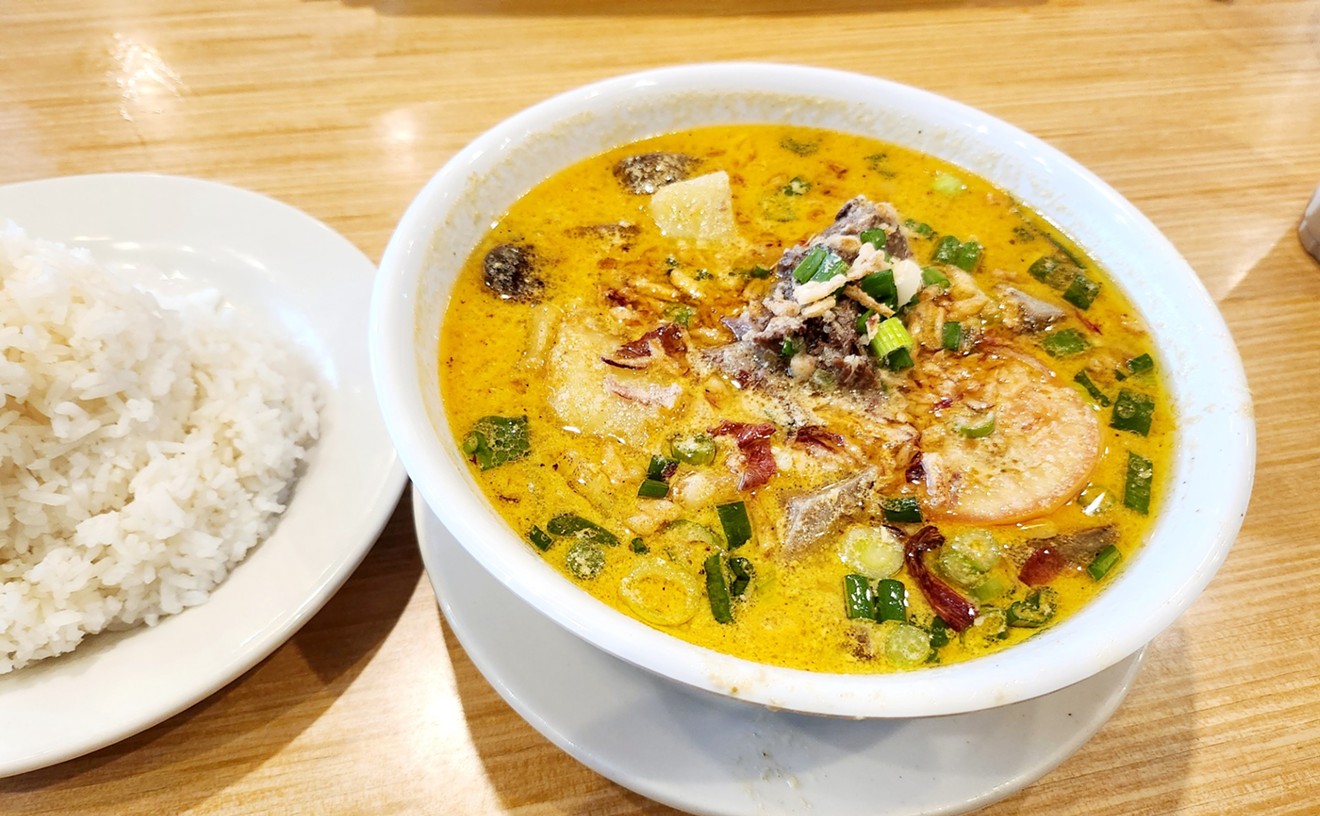This piece of Dallas is known by a handful of names: Korea Town, Little Korea, Little Asia, and, perhaps officially, the Asia Trade District. The area is roughly 70 percent Korean. Signs on most of the businesses are in Korean, with a word in English here and there indicating the type of commerce proffered to those unfamiliar with the language. "Restaurant" is one of those words.
I've sampled some of the places along this stretch, some good, others not so good, few memorable. Which always seemed strange, because if ever there was a strip with potential for a dazzling hole-in-the-wall, it's the Asia Trade District, or whatever you want to call it.
That hole, however, does exist. It's Seoul Garden, a divot that rivals just about any exceptional restaurant in Dallas you can think of. It's not because of the ambiance. Seoul Garden is plugged into a tiny new strip next to a convenience store on the corner of Royal Lane and Reeder Road, a ramshackle industrial area mulched with seediness. Just across Reeder is the shuttered Star Video, the place nightclub operator Steve Kahn and his brother Bruce are attempting to transform into an adult emporium and totally nude dance club.
And it's not because of the service. Even after discounting for missteps due to language and cultural barriers, Seoul Garden leans a bit toward the inattentive side. But in terms of food -- its freshness, its flavors, the level of meticulous care put into the smallest dish -- this restaurant has few equals.
"Seoul Garden" is almost imperceptibly lettered just above the glass doors. Inside, it's just about what you'd expect: bright with white patterned wallpaper, white tile floors, chrome-backed chairs in the main dining room, and a big tropical fish tank. Stacks of Korean newspapers rise next to the door.
Formica tables crowd the dining areas, a few of them holding an unusual option: barbecue pits. These pits are for Korean barbecue, a do-it-yourself grilling of marinated beef, chicken, or seafood. A server lifts the stainless steel lid in the center of the table and fires things up. Then a metal bucket, filled with red-hot coals, is lowered into a hole in the table. A slotted metal disk is dropped into place.
Marinated rib eye steak is served in large, thin sheets of marbled meat spread over a platter with clusters of mushrooms and onions off to the side. A plate stacked with fresh romaine lettuce employed to wrap the grillings accompanies the meat platter. A server snips the steak into small strips with scissors, and then leaves you to fend for yourself. Which you do, kissing the strips to the grill with a sharp hiss, quickly flipping them with chopsticks.
The meat comes with dipping sauces, a thick miso sauce the consistency of peanut sauce, and a thin, light sesame sauce. But the tender, rich meat needs nothing.
Korean meals are populated by clusters of side dishes. These freshly energetic, articulately seasoned dishes include clean, nutty seaweed salad; tangles of cold potato and carrot threads; noodles twisted with seaweed; sweet, chewy fish cake; bright broccoli florets dribbled with sweet hot sauce; creamy Korean cole slaw; crisp green beans; and strikingly pungent cabbage and cucumber kimchi (spicy fermented, pickled vegetables).
The unusual thing about Korean cuisine is the ubiquitousness of the chili, which punches its sauces and kimchi. Having originated in Central America, chilies are thought to have entered the Korean peninsula around 1592, when Portuguese Catholic priests carrying chili seeds (brought to Europe by the Spaniards) accompanied invading Japanese troops during the seven-year war between the two countries.
Historically, the Korean peninsula has been bludgeoned by numerous Japanese invasions, which perhaps explains why Korean cuisine, like Japanese, is beset with clear, energetic flavors and brisk cleanliness. It may explain Seoul Garden's sushi bar, which serves up sushi as fresh, cool, clean, and bright as any of the better offerings in Dallas.
Such focus on detail carries over to virtually everything on the menu. Steamed dumplings -- filled with beef, onion, and carrot -- were moist, firm, and perfectly supple. Braised octopus with carrot and onion in brisk hot sauce garnished with a tangle of cold noodles was firm yet tender, with hints of sweetness peering out of the surging heat.
Dallas has many spots promising distinctive dining "experiences." But it's hard to imagine a more powerful dining experience than the one in this mall slot. After all, its experiential power is packed where it should be: in the food.










